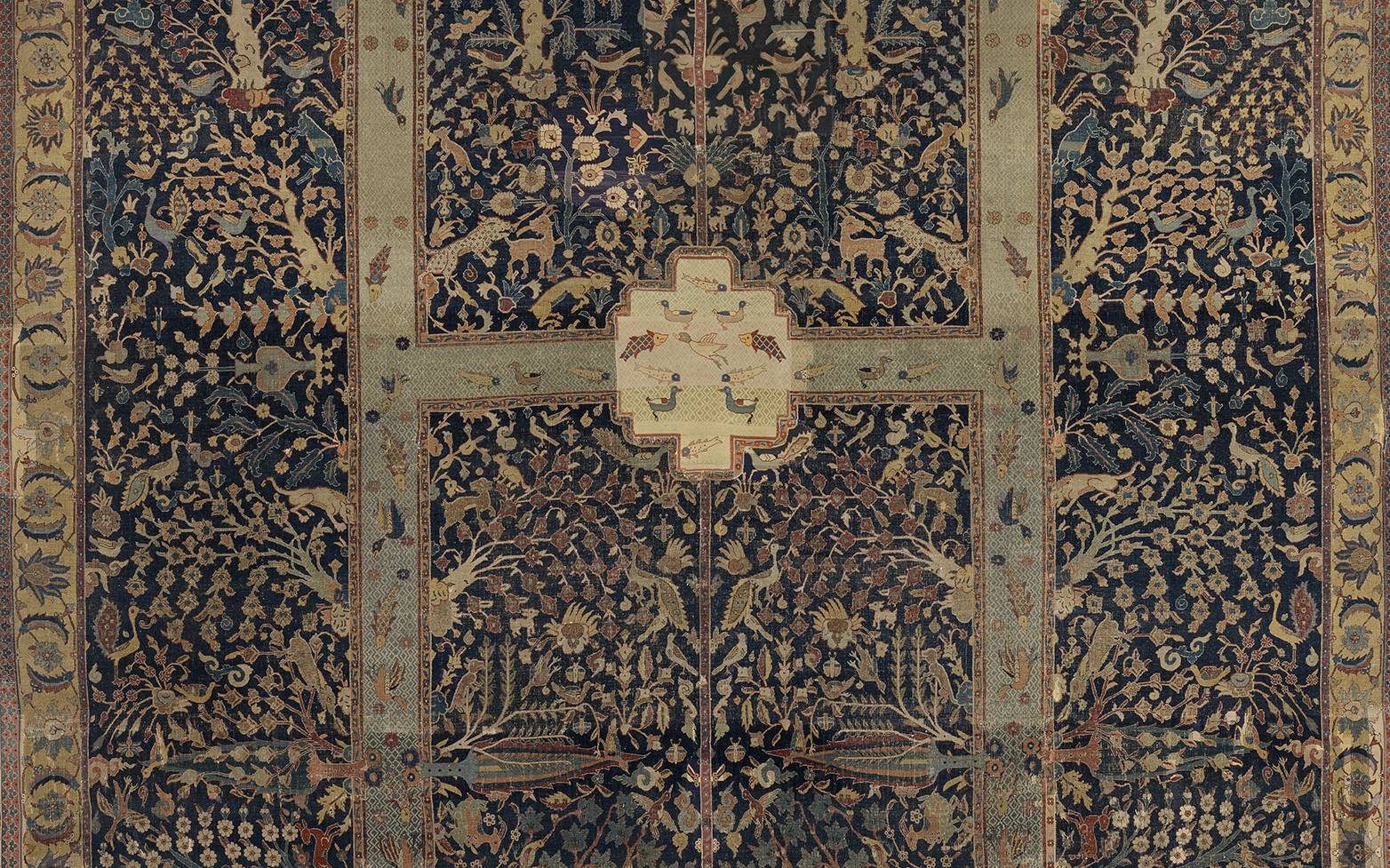
Paradise Garden: The Wagner Garden Carpet
Reveal the link between the words “paradise” and “garden.”
Feb 11, 2020 - Jan 17, 2021
Rasheed Dhuka and Nooruddin Khawja Family Gallery (formerly the Lower-Level Gallery)
Slip into a lush, green garden teeming with life and discover for yourself why the word “paradise” comes from the Persian for “walled garden.” A masterpiece of Islamic art that rarely travels and is on display in Canada for the first time, this monumental carpet made in 17th-century Kirman, Iran, is one of the oldest surviving Persian garden carpets. It’s also one of the most unique, with a creative design and a bounty of birds, beasts, and blossoms that whisk the viewer into the centre of a luxuriant walled garden.
Creatures of Earth, Air, and Water
At an impressive size of over 4 x 5 metres, the Wagner Garden Carpet is home to a vast variety of flowers and trees – including cypress and plane trees – and many different creatures. See how many of these you can spot:
- Flying crane
- Running deer
- Lions pouncing
- Paddling ducks
- Peacocks strolling
- Foxes frolicking
- Wolves prowling in the foliage
- Cheetahs hunting goats
- Doves perching
- Butterflies fluttering in the air
- Fish swimming in the canals
- Snails slithering on the foliage

One-of-a-Kind Design
The design of the carpet is inspired by the classic plan of formal Persian gardens, known as chahar bagh (“four garden”), a walled park with water channels. Usually, this is depicted in carpets as a horizontal channel intersected with a vertical one, creating four rectangles of foliage. The Wagner Garden Carpet, however, has its own special design: two long, parallel water channels, linked by a central pool and two short tributaries, form the shape of the letter “H” and create six rectangular sections. What’s more, the creatures and foliage in those sections are oriented so that a person sitting at the centre of the bottom of the carpet could look around and see the plants and animals appear upright, as they would appear in a real garden. This unusual, immersive design device, along with the profusion of life woven into the carpet, makes it apparent why the English word for “paradise” comes from the ancient Persian term “pairidaeza,” meaning walled garden.

Once-in-a-Lifetime Tour
Named after a German collector who acquired it in the early years of the 20th century, the Wagner Garden Carpet was bought by Scottish shipping magnate Sir William Burrell in 1939. Burrell displayed it in the drawing room of his castle until 1944, when he gave his art collection, including the carpet, to the city of Glasgow. Because of the carpet’s monumental size and the restrictions Burrell placed on it, it’s only been out of storage and on public display three times in the past 20 years and has never been in North America before. The Wagner Garden Carpet makes its first and only appearance in Canada – plus its last stop on this rare tour – at the Aga Khan Museum, following an appearance at the Museum of Fine Arts, Houston, and a debut at the Metropolitan Museum of Art, New York City.
Curator: Dr. Filiz Çakır Phillip
In The News:
Breakfast Television Toronto, Feb. 20, 2020
Nicole LIVE at Aga Khan Museum (2/5)
Breakfast Television Toronto, Feb. 20, 2020
